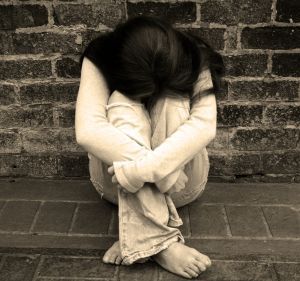For a long time, criminologists focused their attention strictly on the role of the criminal. But over the years, it has been discovered that the role of the victim is actually very important as well, as it can influence fate and shape and motivate a criminal. Today, there are a number of theories attempting to explain victimization and its causes. A few of the most common and important theories are the victim precipitation theory, the lifestyle theory, the deviant place theory and the routine activities theory (Siegel, 2006).
The victim precipitation theory suggests that some people cause or initiate a particular confrontation that may eventually lead to that person becoming victimized by injury or death. Such precipitation on part of the victim can either be active or passive. Active precipitation exists when the victim knowingly acts in a provocative manner, uses fighting words or threats, or simply attacks first. In cases of rape, courts have presented not-guilty verdicts based upon whether or not the victim acted in any way that seemed to consent to sexual relations such as the manner in which a woman was dressed (Siegel, 2006).
Passive precipitation however, occurs when the victim contains characteristics that unknowingly motivates or threatens the attacker. Such crimes can exist due to personal conflicts such as two individuals competing for a love interest, a promotion, a job, or any other desirable or rare commodity. A woman may receive a promotion and become a victim of violence because of the jealousy of someone she may or may not even know. Such precipitation may also exist when a victim is part of a particular group that offends or threatens someone’s economic well-being, status or reputation. According to research, passive precipitation exists in relation to power. Therefore, economic power reduces the risk of victimization (Siegel, 2006).
Next is the lifestyle theory. Many criminologists believe that those whose lifestyle increases criminal exposure are more likely to become victims of crime. Behaviors such as going out late at night, associating with younger men, and residing in cities increases the chances of falling victim to crime. Therefore, one can reduce their chance of becoming a victim by staying home at night, living in a suburban area, avoiding public areas, getting married, and making more money. Therefore, the lifestyle theory holds that crime is not random but instead is a function of an individual’s chosen lifestyle (Siegel, 2006).
Those who choose high-risk lifestyles which include taking drugs, drinking, and participating in criminal activities run a much higher risk of becoming victims. Also, the more time someone is exposed to street life, the greater their chance of becoming victims. Young men in particular have a very high risk of victimization. College students who tend to spend several nights partying each week are also more likely to be at risk than those who avoid such unstable lifestyles. Those who commit crimes increase their chances of becoming victim of crimes as well (Siegel, 2006).
Another theory is the deviant place theory. This theory holds that victims do not motivate crime but rather are prone to becoming victims simply because they live in social areas that are disorganized and contain high-crime rates and therefore have the highest risk of coming into contact with criminals regardless of their lifestyle or behavior. The more someone visits a high-crime area, the more chances they will have at becoming a victim. Such places are poor and highly populated (Siegel, 2006).
The final theory discussed is the routine activities theory which concludes that the “volume and distribution of predatory crime” are closely linked to three variable interactions that present the typical ‘routine activities’ executed in an American traditional lifestyle (Siegel, 2006 p.80). These variables involve: (1) available and suitable targets such as unlocked homes that contain salable goods, (2) the lack of proper guardians such as police, homeowners, and neighbors, and (3) the existence of encouraged offenders such as addicts, teenage boys, and those who are unemployed. The presence of such components increases the probability that predatory crime will occur. Therefore, targets are more likely to become victim to crime if they are engaging in dangerous behaviors, lack guidance, and are frequently exposed to a large population of motivated offenders (Siegel, 2006).
Such areas are known as hot spots. Public housing projects for example, contain a lot of motivated criminals such as unemployed adults or drug users. Beliefs and socialization also can influence the production of producing crimes. For example those who associate with others who approve of criminal behavior such as violence against women are more likely to engage in date rape. But if an individual’s peer group disagreed with such acts, it would act as moral guidance and prevent that person from behaving criminally in fear of being rejected by their peers. The routine activities theory also focuses on lifestyle. Generally, lifestyle affects criminal opportunity by controlling one’s proximity to criminals, time of being exposed to criminals, attractiveness as becoming a target, and therefore the ability to be protected (Siegel, 2006).
Reference:
Siegel, L. (2006). Criminology. 9th ed. Belmont, CA: Thomson Wadsworth.


